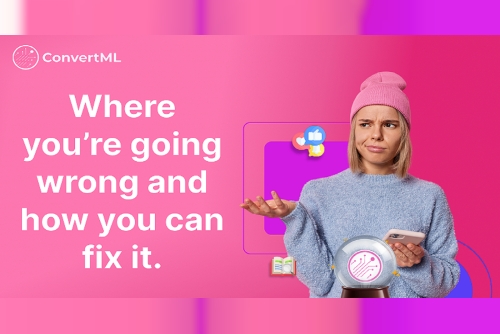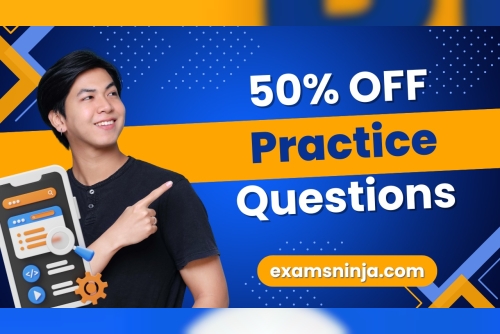Arte TV, a popular streaming platform amongst film enthusiasts and moviemakers, is in a tight spot. A steady slump in the numbers: subscribers, growth, and revenue. Unrest amongst investors. Back-and-forth meetings. Tense in the air.
The marketing team did everything right: timely social media posts for engagement, constant updates to viewers on new releases, keyword-centric SEO strategies for content, and advertising, and the right metrics–and tool stacks to monitor them. Played by the book. What went wrong?
We’ll tell you what. Yes, it had everything to do with–you guessed that right–Data & AI!
We know what you’re thinking: This must be another definitive, how-to, or another listicle, chiming about data, AI, and their importance in marketing. Some clarification on that: It’s not. Read on and you’ll quickly realize why.
The right term to use here would be “lacuna”–a gap–in marketing. What exactly is this gap that, when addressed, will magnify your marketing efforts? We promise you this: By the end of this article you’ll have discovered the secret to not only analyzing and understanding customer behaviour but predicting it!
Customer behaviour: Almost predictableHere’s a stat to back up our bold title: Human behaviour is 93% predictable.
Here’s a thought: If there’s a trove of data, various sources to ingest them from, and if this data can almost accurately predict customer behaviour, then where exactly is the gap? What could Arte TV do differently? We’ll see that shortly.
We spoke to multiple marketing teams and market insight professionals over a period of three months to understand their primary concerns. This is compiled into a list below:
Huge amounts of data are being collected from multiple sources, but there are limited ways to combine and make sense of them. According to a survey conducted by Adverity in September 2022, 67% of CMOs say they are overwhelmed with data.Lack of insight due to using quantitative and qualitative data, often in isolation or ineffectively.A need for real-time insights to keep track of rapidly evolving customer preferences.Additional dimensions to consider when using customer data, such as privacy and compliance. Paradoxical indeed.Growing number of competitors in the market with overlapping features led to saturation.Lack of predictive analytics–due to budget and time constraints, limited resources, and lack of data science expertise–forcing market insight professionals to take a reactive instead of a proactive approach to understand customer behavior and market trends.Completing the puzzle: Combining the “what”, “how” and “why”Over a period of time, multiple tool offerings have mushroomed in the marketing. Juggling with a set of tools, marketers are able to gather a plethora of metrics that are important to understand how well the company’s products and services are performing. Some popular metrics include page views, social media impressions, keyword rankings, likes and follows, and sales numbers. These are examples of “quantitative data”. This is data that you can quantify and represent in numerical format.
Market insight professionals also use customer reviews and testimonials, social media comments, interviews, and chat support logs to better understand customer behaviour. These are examples of “qualitative data”. This is data not representable in numeric format. This is usually textual, audio, and video data.
Arte TV’s marketing team tracked them as part of their efforts to understand the platform’s growth better, assess brand visibility and popularity, and measure user engagement, among other things. They also used other tools to understand customer sentiment and behaviour by analyzing text, audio, and video data on social media posts, online surveys, interviews, and questionnaires. And yet, they had limited insight into customer behaviour, which led to a steady decline over a period.
Why did Arte TV start to lose subscribers? Did the UI need to be more user-friendly? Did they want more classics to be added to the collection compared to contemporary works? Why did a platform with loyal subscribers start to see a steady decline in its numbers? What was the main reason for churning?
We’ll address the problems that Arte TV was facing and show, through numerous examples, how they could have been addressed differently.
The above table indicates a growing concern: increasing customer churn and a reduction in subscription renewal rates. And despite having clear indicators of growing customer dissatisfaction, there’s no concrete reason this is happening.
Case 2: The use of qualitative data to understand customer preferences, habits, and behavior
User comments
Month 1 — “Loving the unique content here! ????, Diverse selection is lit ????, This platform’s lineup is interesting ????”
Month 2 — “Documentaries are a nice touch ????, Cultural content is a win ????, They always keep things fresh! ????”
Month 3 — “Something’s different with the marketing lately ????, I’ve noticed some changes ????, There’s something new in the air ????️”
Month 4 — “Sometimes it’s hard to find what I want ????, Navigation could use some help ????️, Variety of content is impressive ????”
Month 5 — “Content selection is diverse and exciting! ????, Loving the variety on this platform ????, Keep the interesting lineup coming! ????”
Survey responses (from the suggestions section)
Month 1 — “Exploring new content avenues ????, Content discovery methods are interesting ????️, I prefer foreign films ????”
Month 2 — “Influences shaping my choices ????, Content preferences vary ????, Word-of-mouth recommendations matter ????️”
Month 3 — “Preferred content genres ????, What do you enjoy the most ????, Some changes noticed ????”
Month 4 — “Overall satisfaction level ????, How can we make your experience better ????, Need better navigation options ????️”
Month 5 — “Suggestions for improvement ????, Content variety and appeal ????, The lineup keeps things fresh! ????”
After going through the social media comments and survey responses, you might have a slightly better idea of what the customer wants. But marketing professionals find it challenging to trace back, let’s say, customer churn, to the insights they have gathered from performing a qualitative analysis.
Also, note that the above examples (both qualitative and quantitative) are only samples. The real dataset could have anywhere between a few hundred to a thousand responses each month and a lot more metrics than what you see above. With enormous volumes of data being collected, market insight professionals would find it very overwhelming to merge heterogeneous data and make inferences from it in order to modify their marketing campaigns/strategies. Adding to this is the complexity of the data itself that is being ingested, ranging from text and audio to video data.
In the third scenario, there is a combination of qualitative and quantitative data. Again, note that this is only a sample, and the real dataset would have a far greater number of rows and columns. The rows here indicate the subscriber information, and the columns are the metrics/qualitative data per subscriber. Training an ML model on historical and real-time data can help identify patterns (in our case “make connections”) between variables that would not have been apparent to the human eye. In the above example, the target variable, to be predicted, is the churn rate. Arte TV could then leverage the output from the model in the following ways:
Clustering subscribers into different risk groups based on the churn score(output is a number, that is the probability that a customer will churn) and then sending them personalized offers, additional discounts, and customer support interventions.Identifying the reasons for churning across different churn groups and improving the overall marketing campaign.Identifying specific customer needs and working towards addressing them, helping increase engagement and revenue, as a result.Do you remember the challenges that we had listed above? Time to revisit them, in the context of Arte TV.
Problem 1: The data collection mechanism adopted by Arte TV was top-notch, but they didn’t have an effective strategy to combine/integrate them all in one place. Using a combination of quantitative and qualitative could have helped market insight professionals get a more comprehensive view of their subscribers.
Problem 2: They had vast amounts of quantitative and qualitative data, but in isolation, combining which could have gotten the marketing team a better picture of what factors were influencing subscriber behavior and what they could have done differently.
Problem 3: They took a reactive approach where they focused on the problems after they occurred. Using a predictive model could have helped them predict subscribers who were most likely at risk of churning, upon which they could have customized and improved their customer retention strategies per segment.
Problem 4:The marketing professionals used multiple tools, often with overlapping functionalities and no clear privacy guidelines, to perform the analysis. This not only required them to learn multiple tools for similar activities but also led to increased costs of keeping the subscriptions. Using an all–in–one tool/solution would have been convenient and cost-effective.
CTAAfter going through the different challenges that the marketing team and market insight professionals face and exploring Arte TV’s use case one thing is certain: the need for a platform that:
Makes it easier to source data from multiple sources, be it structured or unstructured, and merge it to provide you with a unified view.Lets you customize and streamline your customer data pipeline.Enables you to get richer customer insights through interactive dashboards, live reports, and advanced analytics, without having to write a single line of code.Protects your data integrity and enables you to stay compliant with GDPR and CCPA.Provides in-depth insights into customer behaviour so you can maximize your efforts toward improving customer engagement.Predicts customer churn and guides you and your team in developing the right retention strategies.Choose ConvertML and see your ROI grow 10X! Schedule a demo with us right away!












